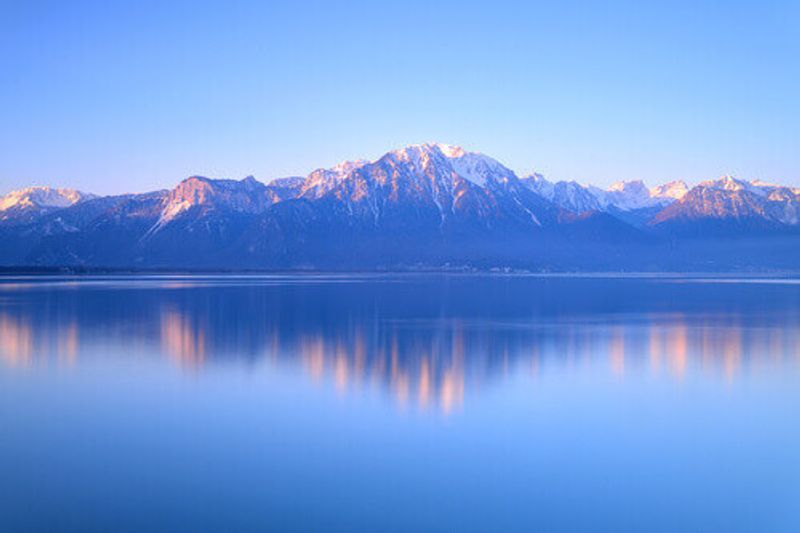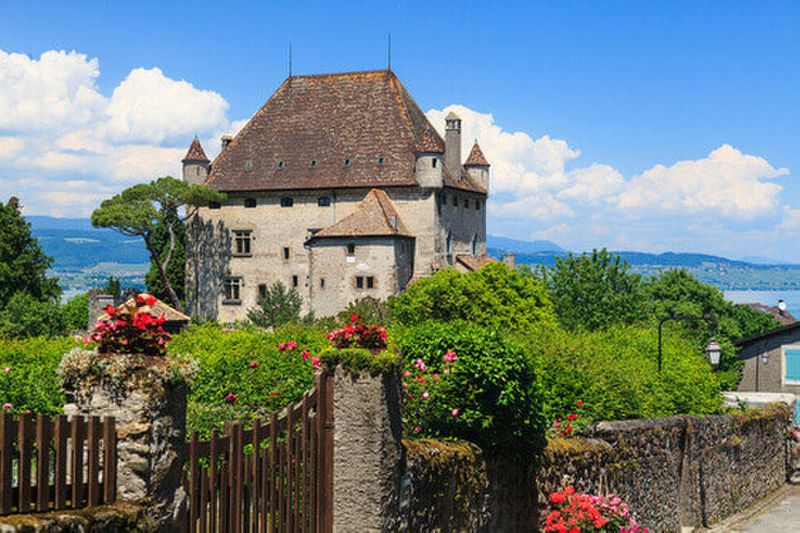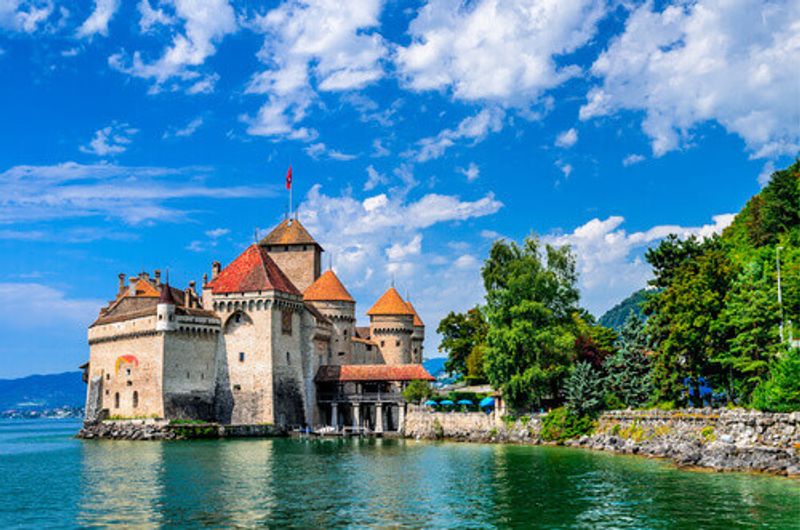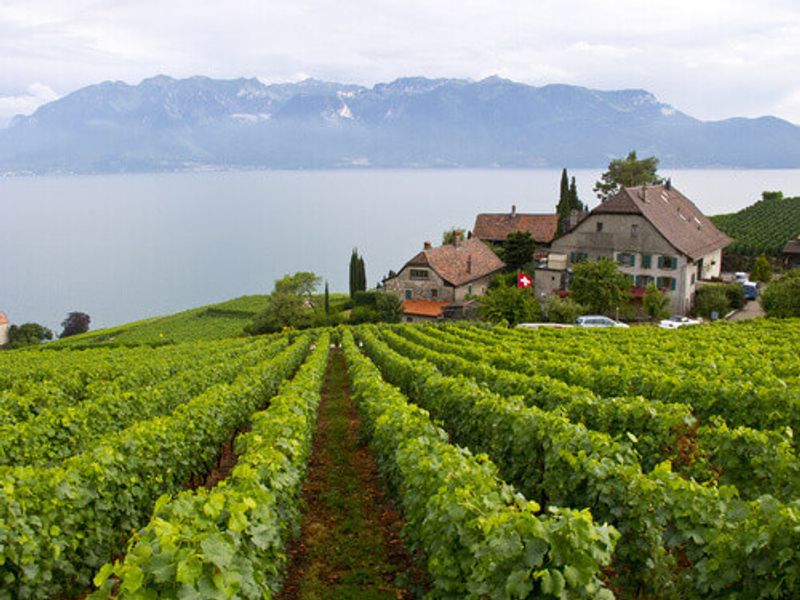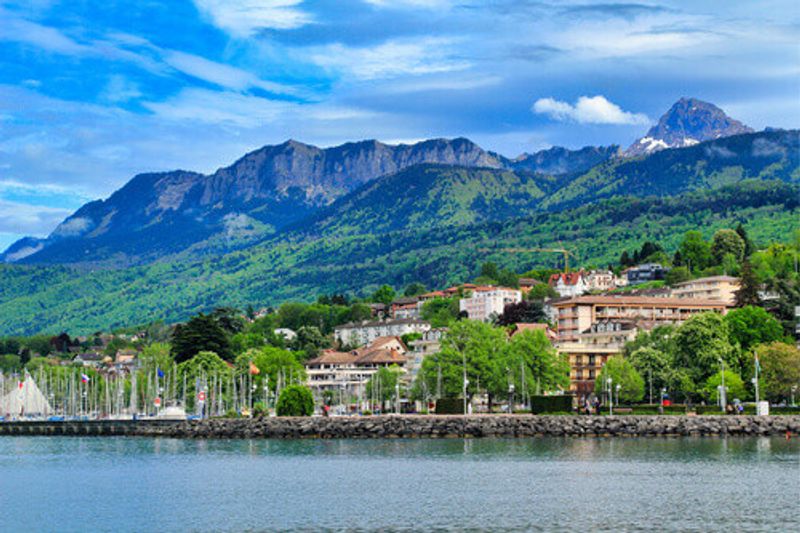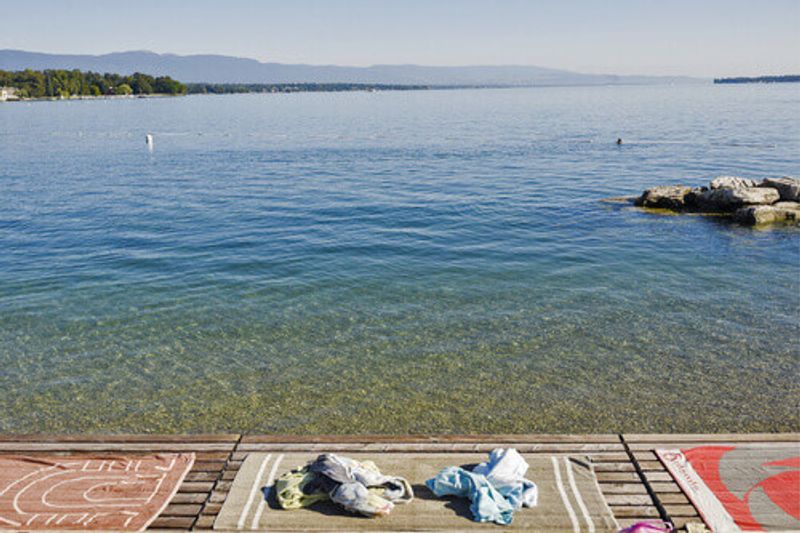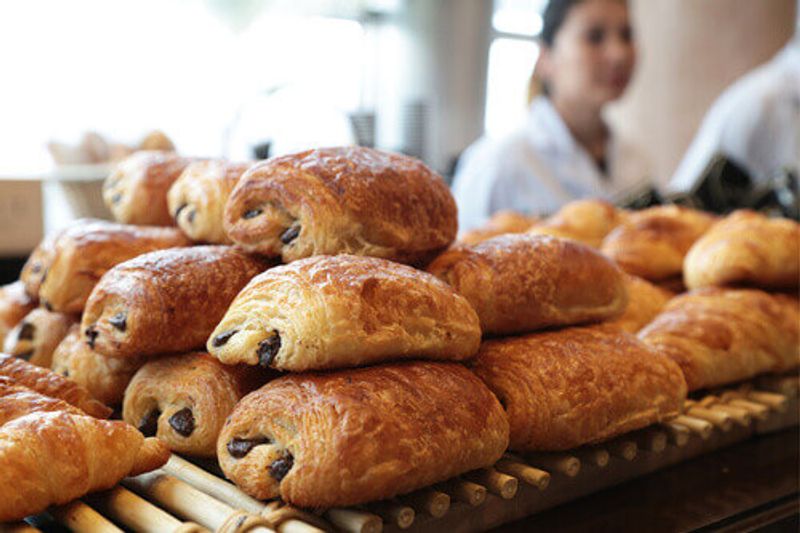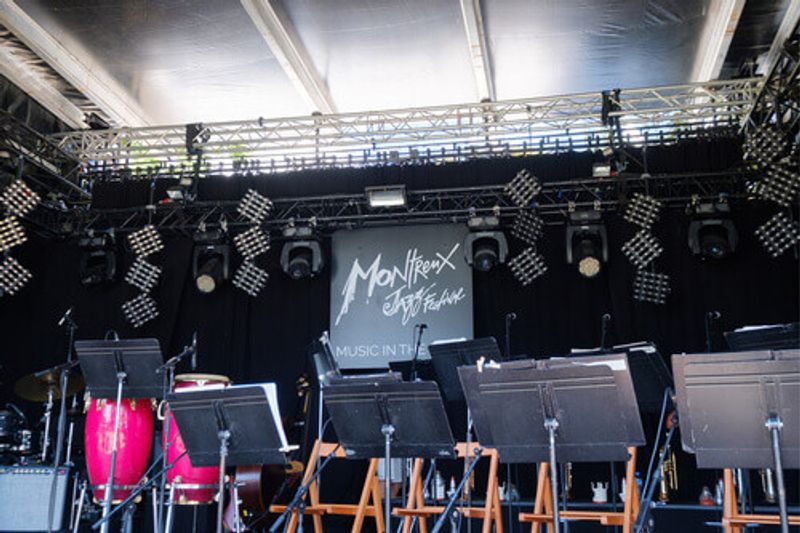Wine, jazz, culture and – of course – pristine swimming spots, Lake Geneva has it all
Crystal-clear, shimmering Lake Geneva – or Lac Léman as it’s known to the locals – gives life to the villages, towns and cities that are dotted along its shores. As a source of entertainment, culture, health, food and even wine (we’ll come back to that later), the influence of this crescent-shaped lake on the surrounding area is hard to overstate.
One of the largest lakes in Western Europe, it straddles the border between Switzerland and France, and is surrounded by mountains on all sides.
Here, six reasons why you should make it a central part of your Swiss experience.
1. For the medieval architecture
On the French side of the lake you’ll find one of the finest medieval towns anywhere in the world. Easily accessible by boat (just one of the many delightful boat trips available on Lake Geneva) Yvoire dates back to 1306, when the formidable Château d’Yvoire was responsible for protecting trade routes through the Alps.
Today, the castle stands guard still over what has been named one of the 100 most beautiful towns in France. Go in spring or summer, and not just for the weather; the town is famous for its flower-lined cobblestoned streets and immaculate gardens.
For another step back into the Middle Ages, head to Montreux where the iconic Chillon Castle juts out until it looks like it is almost floating on the lake. Take a guided tour to get a feel of what life was like for the Dukes of Savoy back in the 11th century. After the tour, seek out the small, secluded beach beside the castle for a prime picnic spot.
2. For the wine
Don’t feel bad if you don’t know anything about Swiss wine - that’s because those tricksters want it that way. Switzerland famously only exports about 1% of its wine, which means the best bottles remain on home turf. One of the biggest – as well as the most jaw-droppingly beautiful - wine regions in Switzerland (nay, the world) is the UNESCO World Heritage terraced vineyards of Lavaux. Here, mostly white grapes such as Switzerland’s beloved chasselas are grown in terraced rows which stretch from the banks of the lake to the high slopes above.
David Connolly, who works with Lavaux wine producer, Ponnaz et fils, explains what makes the local vintages so special.
“Locals talk about ‘three suns’ that the vines on these steep slopes get,” says Connolly. “The sun from the sky, the reflected sun from the lake, and the heat which the stoned terraced walls keep and release slowly in the evening. Terracing the land into small parcels remains the only possible way to grow wine here which means that many of the vine management techniques have changed little over the past hundred years.”
Take a walk (or hop aboard the wine train) through the vineyards from Lutry to Saint Saphorin and all the villages in between, stopping to sip a glass of crisp chasselas from the many small caves (wine cellars) you’ll find along the way.
3. For Frankenstein
Just beyond Geneva lies the beautiful and extremely upmarket town of Cologny, a leafy, quiet (not to mention expensive looking) neighbourhood which boosts an incredibly rich cultural heritage.
Olivier Girardet, Cologny Council Member, says: “Head to The Bodmer Foundation where alongside regular and temporary exhibits there is a rare Gutenberg Bible, one of the world’s first printed books. Next, walk up to the Pré-Byron to take in the amazing view of the lake and to see the place where Frankenstein was written.”
Yes, that Frankenstein. It was in this very spot that Mary Shelley spent the miserably gray, rainy summer of 1816 (next door to Lord Byron, no less). The 18-year-old penned her masterpiece here and later described as the moment she “stepped out from childhood into life."
The house Shelley rented is no longer standing, but from Pré-Byron you can still get a great view of the privately owned Villa Diodati where Lord Byron stayed and wrote alongside Shelley.
4. For the purest water on earth
Évian mineral water is famous the world over, but nowhere does it taste better than drinking it straight from the source – the town which gives the bottled version its name.
Évian-les-Bains is a charming waterfront town in its own right with plenty of shops, restaurants and of course, spas, to make it worthy of a visit in its own right.
After the first mineral baths were built in 1824, Évian became a hotspot for European spa holidays. The Cachat spring elevated Évian to international fame, primarily for its healing properties. The Baron of La Rochette, for example, claimed he was ‘cured’ from a mysterious illness after bathing in its waters. You don’t even have to buy the stuff – just fill up your own bottles (for free) from several fountains in town.
5. For the swimming
This part of Switzerland gets pretty toasty in the height of summer, and there’s no better way to escape the heat than plunging headfirst (or at a more leisurely pace if you prefer) into the fresh, clean waters of Lac Leman.
And while you’ll need to pay a visit in the summer months to take full advantage of the nearly 116 public beaches on Lake Geneva, there are some year-round options if you arrive out of season. In Geneva, Bains des Pâquis is a sun-worshippers idea of heaven in the warmer months (they also serve great food here), and a great place to warm up in a sauna or Turkish bath (and, if you’re really brave, a dip in the lake) during winter.
Dawn concerts – classical music playing as the sun rises over the mountains – are available nearby in summer and are always worth getting up early for. Just remember to pick up a coffee and pain au chocolat on the way.
6. For the music
On the subject of music, there’s a reason why Queen frontman once called Montreux home – and it wasn’t for the scenery.
Lake Geneva is home to some of the largest music festivals in the world, with the Montreux Jazz Festival hosting some of the biggest names in jazz, blues, soul and rock since the 1960s.
Another notable summer festival is Paléo, one of the largest open-air festivals in Europe held every July in Nyon (between Geneva and Lausanne). Stick around at the end of the six-day event for a spectacular fireworks display over the lake. If huge, crowded festivals aren’t your thing, there are plenty of smaller, more intimate festivals held in other lakeside towns like Hermance and Cully.
